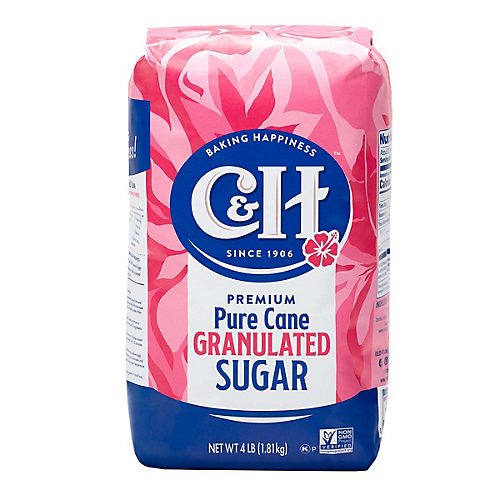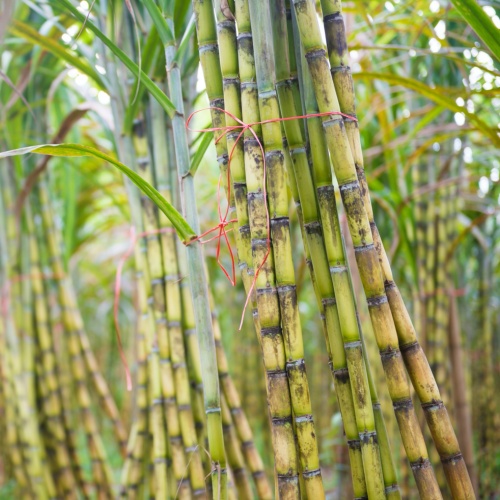Exploring the Comprehensive Tips Entailed in Walking Cane Sugar Handling From Harvesting to Improvement
The procedure of walking cane sugar manufacturing incorporates a collection of detailed actions, beginning with the cautious harvesting of sugarcane and culminating in the refinement phases that ensure the last item meets market standards. Each stage, from the removal of juice to the filtration and formation procedures, plays a critical role in establishing the quality and character of the sugar. Understanding these stages not only highlights the intricacy of sugar production but likewise increases critical inquiries concerning performance, sustainability, and innovation in the sector. What ramifications do these elements have for future techniques?
Collecting Sugarcane
Gathering sugarcane is a vital action in the walking cane sugar processing chain, as it straight influences the quality and return of the final product. Correct timing and techniques are necessary during this stage to make certain ideal sugar web content and decrease losses. Typically, sugarcane is gathered when it reaches maturity, usually 12 to 18 months after growing, defined by a high sucrose focus.

Post-harvest, the sugarcane needs to be processed promptly to avoid sucrose degradation. Ideally, collected cane must be moved to refining facilities within 24 hours to maintain sugar quality. Therefore, efficient logistical preparation is vital to preserve the honesty of the gathered crop throughout the supply chain.
Extraction Refine

The smashed cane undergoes a series of pressing procedures to optimize juice recovery. Commonly, hot water is sprayed onto the smashed walking cane, developing a countercurrent circulation that helps liquify the sugar while also helping in the extraction process. The juice gathered from this procedure includes not only sugar however additionally different organic substances and contaminations.

To improve extraction efficiency, some centers might use diffusion approaches, where the sugarcane is taken in warm water, allowing the soluble sugars to diffuse into the fluid. The resulting juice, rich in sucrose, is then guided to subsequent processing phases, laying the foundation for purification and improvement. The removal process is thus crucial in determining the high quality and yield of the last sugar product.
Purification Strategies
The filtration strategies utilized in walking cane sugar handling are necessary for changing the raw juice right into a top quality sugar product. These approaches mainly intend to get rid of contaminations, such as soil, plant materials, and inorganic compounds, which can negatively impact the last product's taste and color.
This process involves adding lime and warmth to the raw juice, which helps with the coagulation of pollutants. Additionally, the use of phosphoric acid can enhance the information process by more binding pollutants.
Another substantial strategy is carbonatation, where co2 is introduced to the cleared up juice. This reaction generates calcium carbonate, which records staying pollutants and advertises their elimination.
Moreover, triggered carbon treatment may be related to adsorb any continuing to be colorants and organic pollutants, guaranteeing an extra refined product. The mix of these techniques properly prepares the sugar juice for subsequent actions in the refining process, setting the stage for the production of premium walking cane sugar.
Condensation Methods
After the purification phase, the next vital action in walking cane sugar handling includes crystallization approaches, which play a pivotal role in transforming the clarified juice right into solid sugar. This process normally utilizes two main methods: spontaneous formation and controlled condensation.
In spontaneous condensation, supersaturated sugar services are permitted to cool down naturally, bring about the formation of sugar crystals with time. This method is simpler but might cause uneven crystal sizes and lower pureness degrees. On the other hand, controlled formation is an extra precise method where seeding, temperature, and concentration agents are thoroughly handled. This technique allows for Resources the consistent growth of sugar crystals and greater purity.
During condensation, the made clear juice is focused via dissipation, increasing its sugar web content until it gets to supersaturation. Once this factor is accomplished, either technique can help with the formation process. Cane Sugar Processing. The resultant sugar crystals are then separated from the continuing to be syrup through centrifugation
Inevitably, the choice of crystallization approach impacts the high quality, dimension, and pureness of the last sugar item, making this action important in the general cane sugar processing treatment.
Refinement and Product Packaging
Just how can the purity and high quality of walking cane sugar be additionally boosted after crystallization? The improvement procedure plays a vital duty in attaining top quality walking stick sugar. Following crystallization, sugar undergoes a thorough cleaning to eliminate pollutants and residual molasses. This is usually completed using cozy water or steam, which assists dissolve and extract unwanted elements while preserving the sugar crystals.
Next, the sugar goes through a procedure called centrifugation, where it is rotated at high speeds to divide the cleansed sugar crystals from the continuing to be fluid. After centrifugation, the sugar is often more refined via an approach called carbonization or phosphatation, which makes use of triggered carbon or phosphoric acid to remove color and off-flavors.
As soon as fine-tuned, the sugar is dried out to accomplish the desired wetness material, guaranteeing that it continues to be secure throughout storage and transport. The last step entails product packaging the refined sugar in moisture-proof and impermeable containers to preserve its quality and prevent contamination. Cane Sugar Processing. Appropriate packaging not only prolongs service life however likewise helps with simple handling and distribution, making sure that consumers obtain sugar that fulfills the highest criteria of pureness and top quality
Final Thought
The thorough actions associated with cane sugar handling, from the meticulous harvesting of sugarcane to the intricate refinement and packaging phases, highlight the relevance of each phase in making certain top quality sugar manufacturing. Ideal harvesting methods, reliable extraction techniques, and strenuous filtration procedures collectively add to the final product's pureness and stability. The formation and subsequent product see this website packaging methods even address more improve the integrity and life span of the sugar, highlighting the complexity and precision fundamental in this important farming market.
The process of cane sugar production incorporates a series of elaborate steps, starting with the mindful harvesting of sugarcane and finishing in the improvement phases that make sure the final product meets market criteria. Ideally, collected walking cane needs to be carried to processing centers within 24 hours to maintain sugar quality.In spontaneous condensation, supersaturated sugar services are permitted to cool down normally, leading to the development of sugar crystals over time - Cane Sugar Processing. The refinement procedure plays an important duty in achieving top quality walking cane sugar.The extensive actions included in walking cane sugar handling, from the precise harvesting of sugarcane to the complex refinement and packaging stages, underscore the importance of each stage in making certain high-quality sugar manufacturing